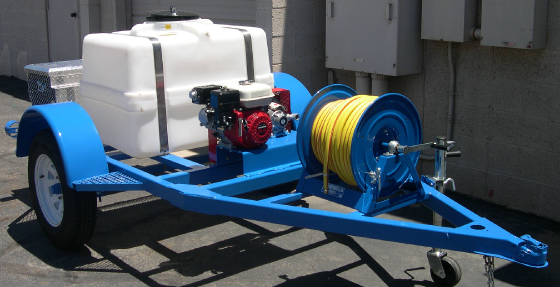Preventative Maintenance Saves Money Part #2
Posted by Andrew Greess on Nov 16, 2021
To ensure you don’t miss anything, take a structured approach to developing your pest control power spray rig Preventative Maintenance program. Our suggestions below follow the flow of water from tank through filter, pump, hose and gun.
Here are some highlights to get you started.
- Tank
Clean your tank periodically for chemical buildup and debris, which will clog lines and starve your pump. Most pumps will sustain serious damage if run dry for more than a brief time.
- Line Strainer
Check and clean your line strainer (filter) to ensure that no debris gets to your pump. When you can no longer rinse out the filter, replace it. Replace the filter o-ring periodically before it swells and no longer creates an airtight seal.

- Pump
Service your pump according to manufacturer specifications. Your equipment provider stocks pump repair kits. Service your pump just before or just after your busy season to be sure the pump is ready for next season. If you wait for your pump to fail before servicing it, you can expect longer downtime and more costly repairs.
- Engine
Service your engine according to manufacturer specifications. Like the engine in your personal vehicle, changing engine oil is the best thing you can do to extend engine life. Periodic tune-ups can keep your engine running and your technicians productive. Replace the pull cord before it breaks.
- Hose Reel
Service the hose reel swivel periodically to prevent leaks. Check the reel tensioner and locking pin for wear.
- Spray Gun
Spray guns can be rebuilt with repair kits available from your equipment provider. Servicing the spray gun can help reduce chemical spills and technician chemical exposure.
- Check hoses
Check the spray hose and all supply hoses for excessive wear and damage. Check clamps and connections to ensure good fit and an airtight seal. Be sure to check any o-rings, gaskets, washers, etc. Failure to do so can result in large spills, especially if the technician is at the far end of 200 feet of hose when the leak occurs.
A good preventative maintenance program is your best friend for reducing pest control equipment down time and improving productivity. Dollars spent on PM will reduce time lost due to unplanned equipment downtime, reduce spills, boost productivity and profitability and contribute to happy customers.

